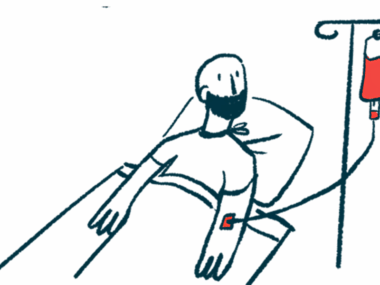Holidays, Planes, Trains, and Myasthenia Gravis
Written by |

Traveling can be an anxiety-provoking experience. There are so many things to remember, including those that are necessary to board the plane. I recently embarked on a trip to Europe, which is quite the distance from South Africa, and learned many valuable lessons.
The first thing I learned is the importance of sorting all the logistics. I don’t mean the normal logistics like obtaining passport photos and weather-appropriate clothing, but rather, ensuring I have all my medicine, which certainly is exhausting. Since prescriptions are typically refillable only every 25-30 days, travel prep wasn’t as simple as going to the pharmacy the day before my trip and picking up all my medication. It took me a couple of months of filling out prescriptions at 25 days (the earliest I am allowed by my insurance to get refills) to ensure I could get medication for my trip at the right time and in the right quantities. Travel with chronic illness requires endless planning, almost overplanning, for every possible medical situation.
Once I had my chronic medication sorted, I had to take flu and cold medicines. This is especially important when traveling in the winter when those illnesses peak. A suppressed immune system does not take kindly to public transport with fellow passengers who are sick. The recycled air in less-advanced planes is ideal for spreading germs, which can aggravate myasthenia gravis (MG) and lead to a symptom flare.
I also had to have some sort of mask to protect me from fellow passengers’ germs. Awkwardly, that gave me many stares. I think most people using public transportation are terrified when I wear my Vogmask. They assume I’m protecting them from my germs when in reality it’s theirs that are problematic. When people stare, I like to keep eye contact and make them just as uncomfortable as they make me. What goes around comes around, am I right?
Depending on the severity level and type of MG, travelers can ask for assistance from the airline when booking a ticket. This can result in less walking at massive airports and remove anxiety about walking in the wrong direction and wasting energy. MG and wasted energy do not go together well. I need to conserve energy and apply it only when there is no other option but to exert it.
Having an understanding travel partner has also been invaluable; someone who understands that even though I could walk far yesterday, perhaps paying extra to take the tram would be better today. I am lucky to have my amazing boyfriend of more than three years with me. He reads my body language and tells me to slow down when I am exerting too much energy. People like him are irreplaceable to those living with MG — they restore my faith in humanity.
Overall, traveling with MG is far from simple, but it should not be avoided at all costs. I am lucky that my symptoms are stable at the moment, which is why I chose to take this trip. It’s important to listen to the body and doctors, and not always the doubtful thoughts. Above all else, remember that life is beautiful and worth experiencing. Never stop fighting.
***
Myasthenia Gravis News is strictly a news and information website about the disease. It does not provide medical advice, diagnosis or treatment. This content is not intended to be a substitute for professional medical advice, diagnosis, or treatment. Always seek the advice of your physician or other qualified health provider with any questions you may have regarding a medical condition. Never disregard professional medical advice or delay in seeking it because of something you have read on this website.






Leave a comment
Fill in the required fields to post. Your email address will not be published.